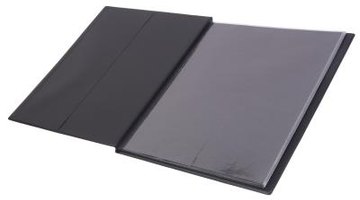Upon graduation or movement to the next level in any type of educational endeavor, you may be required to create a portfolio of your best work or projects. These are often seen in the arts programs, and may contain paintings, portraits, writing samples or even marketing initiatives or business endeavors. Creating a portfolio can be an all-consuming task, but outlining the portfolio first will help you determine what to include and how to organize the project. Portfolio outlines can also serve as a table of contents in the finished portfolio.
Step 1
Gather your works. Ideally, portfolios should only contain the best of your work. No more than 20 samples of your skills should be included. Gather two or three times that amount of samples and divide them into categories. If you are an artist, you might have three categories: paintings, sketches and mixed media. A writer may have two categories: fiction and non fiction. Once you've determined your categories, write them out. These will be your main section headings of your outline.
Step 2
Create subcategories or sections. A writer may have a "Fiction" category, broken down into short stories, novel excerpts, children's stories and flash fiction. Nonfiction may include subsections of personal essays, technical/business writing and ad copy. Include these in your outline as bullet points under your main category headings.
Step 3
Format your outline. List your main categories in bold, capitalized letters. Give them Roman numeral designations. These headings should be flush with your left margin. Hit enter after each heading. Tab over or enter five spaces. This is where you will list your subheadings or sections. Give them the label of small case Roman numerals. Type in the title of your subheadings in standardized titles. Hit enter after each subheading. Tab over two times, or hit ten spaces. This section is where you will enter your works' titles. Give them the designations of capital English standard letters, such as A, B and C. Italicize these titles. If you need to add a Part B or Chapter Two to your work titles, label them small case letters.
Step 4
Save your outline. Continue assembling your portfolio. Make any necessary organizational changes to your outline once you are complete. Add page numbers to the outline and add any design or graphic elements to make it look professional. Include it as the title page of your portfolio.
Related Articles
Writer Bio
Georgia Dennis has been writing since 1995, specializing in the areas of education, behavioral sciences, canine behaviors, human resources and language development. Her work has been published in literary journals, magazines and in print. She is also suspense novelist. Dennis is pursuing her Bachelor of General Studies, with an emphasis in writing and psychology, from Indiana University.











